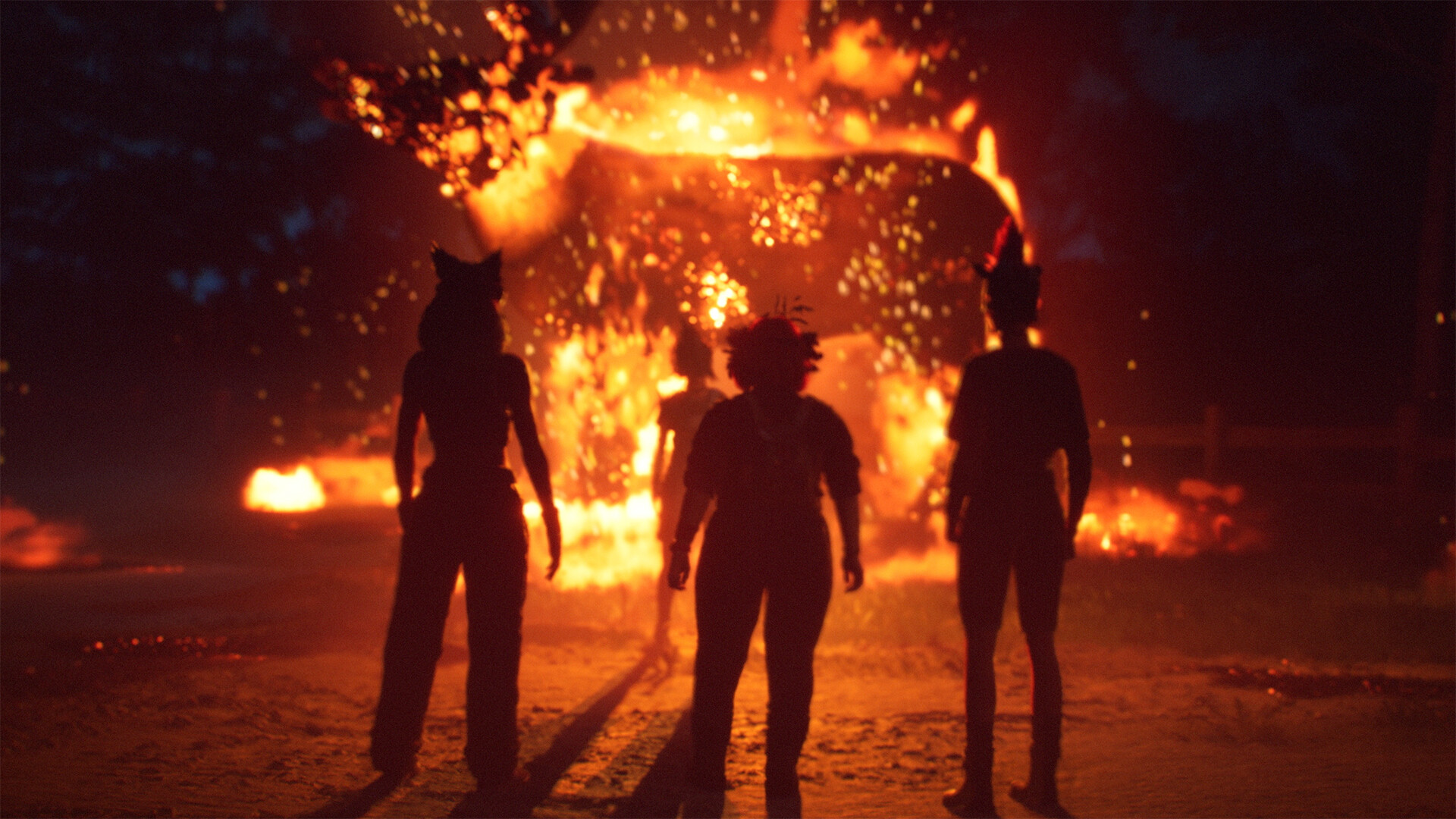Far Cry Primal: How Ubisoft is making history (look really good)
The idea of a prehistoric Far Cry initially feels as wrong as it feels right. On the one hand, the series’ predilection with foliage-based stalking, bows-and-arrows, and lush, untamed greenery makes it a perfect fit. On the other, Far Cry also loves motor vehicles, high-powered explosives, and hang-gliders. Rarely has a fossilised jetski been found in the wild.
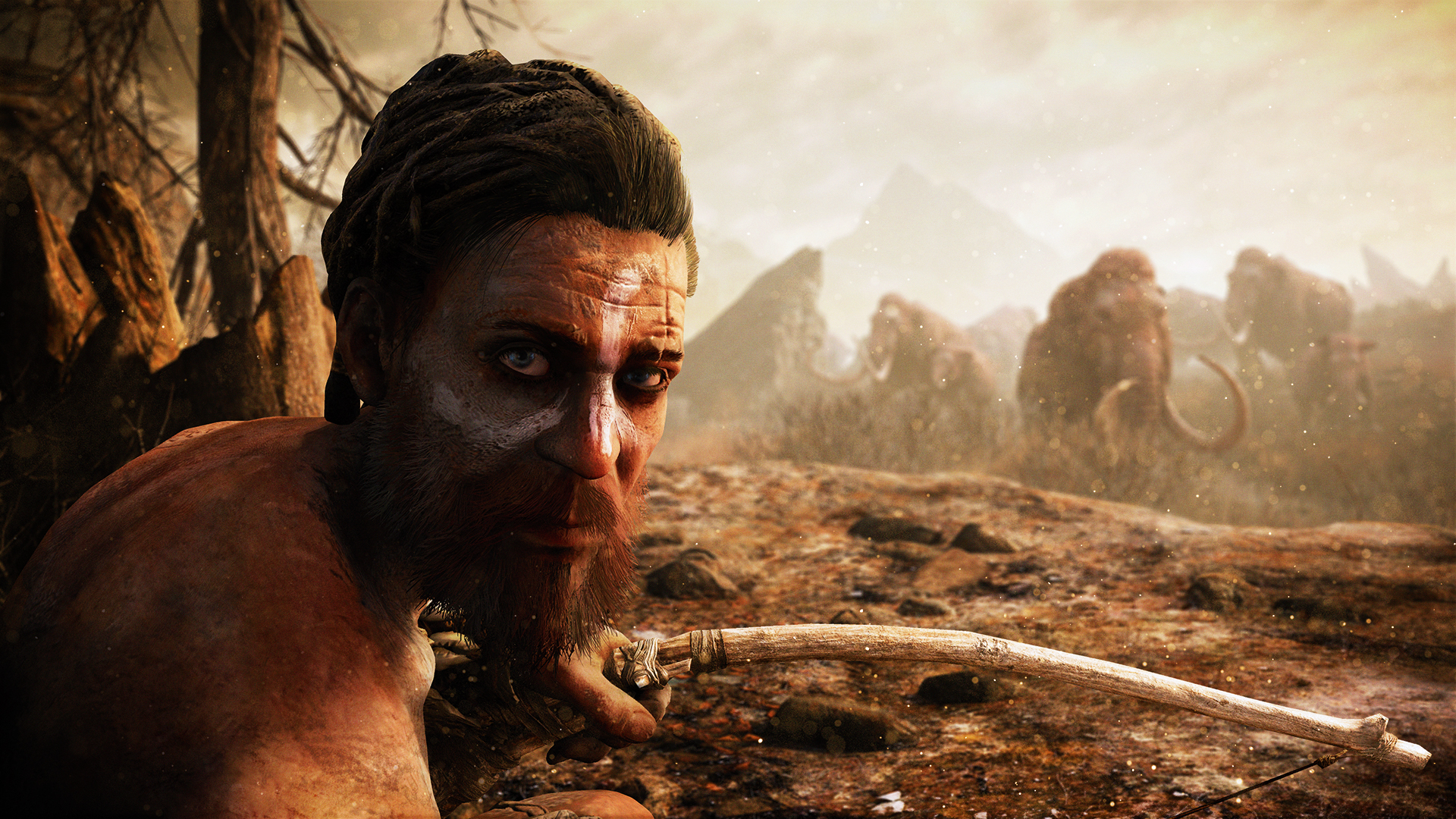
But after a few minutes with the game, such ponderings drift to the breeze. You won’t notice the lack of the series’ modern elements, and what’s more, you won’t notice that you’re not noticing. It’s the cohesion that does it. The level of thought and detail that’s gone into building the game’s 10, 000 BC world; making it feel entirely coherent and believable, if not always entirely plausible. Simply, everything just feels right. You don’t miss the machine guns, because the world – in its shape, content, and tone – feels complete without them. You don’t hanker after driving a jeep because it’s just obvious that this world doesn’t work that way.
Discussing the matter of world-building with Game Director Thomas Simon, I discover that this is no happy coincidence. Rather, the embedding of sympathetically curated action within a grounded and supportive environment has been one of the keystones of Far Cry Primal’s development. Between the series’ more traditional entries, extravagantly themed spin-offs like the ‘80s-inspired Blood Dragon, and now the prehistory of Primal, it seems Far Cry’s essence lives very much within its systems rather than in any particular scenario. Great attention has been paid to transferring that essence in the right way, whatever the setting.
“We like the world to be what’s telling the story, what’s defining the context. We spend a lot of time creating world consistency, making sure that we don’t have a village here just because we decided to, but that there’s a reason for it based on the geography, based on the season, based on the way people live. This is true in Far Cry in the modern world or 12, 000 years ago. The world starts it, and the spirit of the time. From that will come some of the design ideas. That’s also where the characters will come from, and some of the constraints and new ideas for the gameplay. So yes, it’s best to start with that. To try to bring a coherent universe that’s grounded in a reality that the player can grasp.”

But if the world is a primary defining point for any Far Cry game, isn’t there a risk that certain otherwise great design ideas will be forced out for the sake of coherence? According to Simon, the collaborative, organic nature of development at Ubisoft Montreal means that such priorities need not limit a game, and in fact can expand its scope.
“We start from the idea of going stone age, and then we explore all the things we’d like to do. And then we realise that there’s a lot of stuff that we can connect with the mechanics that we have, or that we have to evolve or that we can keep. And then at some point the fantasy exists on its own, and we’re finding new ideas that we didn’t expect.
“I think the key for Far Cry is not to be absolutely realistic, it’s to be believable. There’s always a sweet spot. At some points you have to really keep some stuff grounded, but you have some margin where you can go and explore some things that a little bit more over the top… There’s also never one way to do a feature. Maybe this idea is great, and we realise that we can twist it a little bit so that it fits with the world, or maybe Jean-Sebastian, the narrative director, will like the idea and find a way to put something in the story or the context that justifies it.”
Sign up to the GamesRadar+ Newsletter
Weekly digests, tales from the communities you love, and more
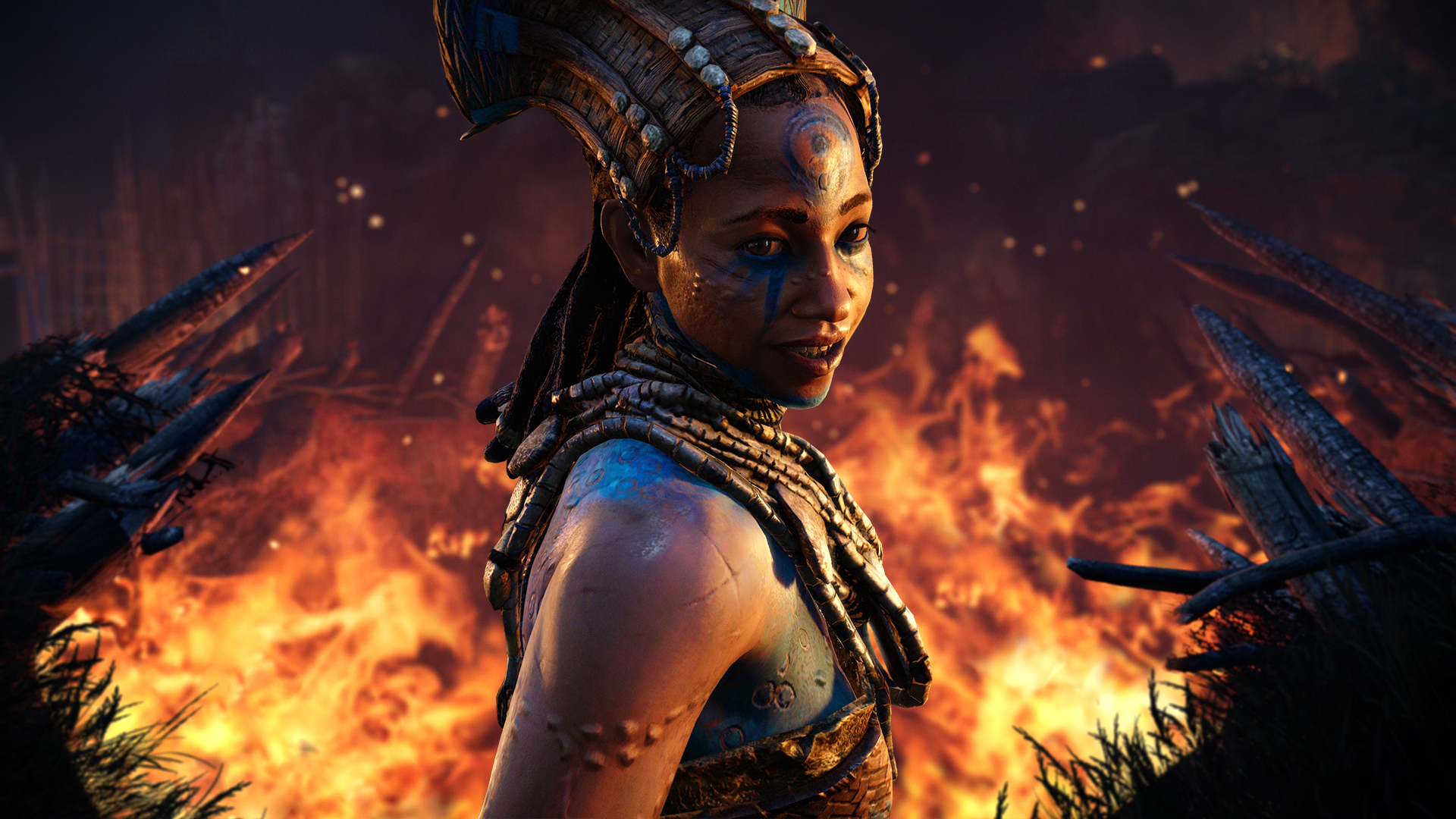
That talk of narrative justification isn’t a simple case of hand-waving, a lazy instance of ‘The writers can fix it’. The idea is that player-led action can always be believable as long as it takes place in a world that makes true holistic sense, and the more I see of Far Cry Primal’s development, the clearer it becomes that this conceit has been a huge part of the process.
Take the characterisation for instance. Translating the series’ prominent human element to the days before recorded history was always going to raise some big questions. Much like a plausible world, creating believable people is key to making any kind of action feel true and resonant. But how to do that in an era without modern, human language? It may have been acceptable to allow one of those ‘margins’ of loose interpretation, using modern words and trusting the player to suspend their disbelief, but evidently that was too much of a risk during such a delicate environmental balancing act. Ubisoft experimented with the traditional trope of broken, cartoonish “Me caveman, fire bad” dialogue, but after bringing in the cast for tests, concluded that it was all too “stupid” to work in an otherwise realistic setting.
The solution? Forget compromises. Write a whole new language. Or rather, a very old one, created with as much attention to detail as modern academic expertise can afford. Enter Brenna Reinhart Byrd and Andrew Miles Byrd, two linguistics experts from the University of Kentucky. Using Proto-Indo-European as their starting point – the source of a huge swathe of modern and ancient languages – they studied its oldest features and then worked backwards still, building the game’s Wenji tongue around these foundations.
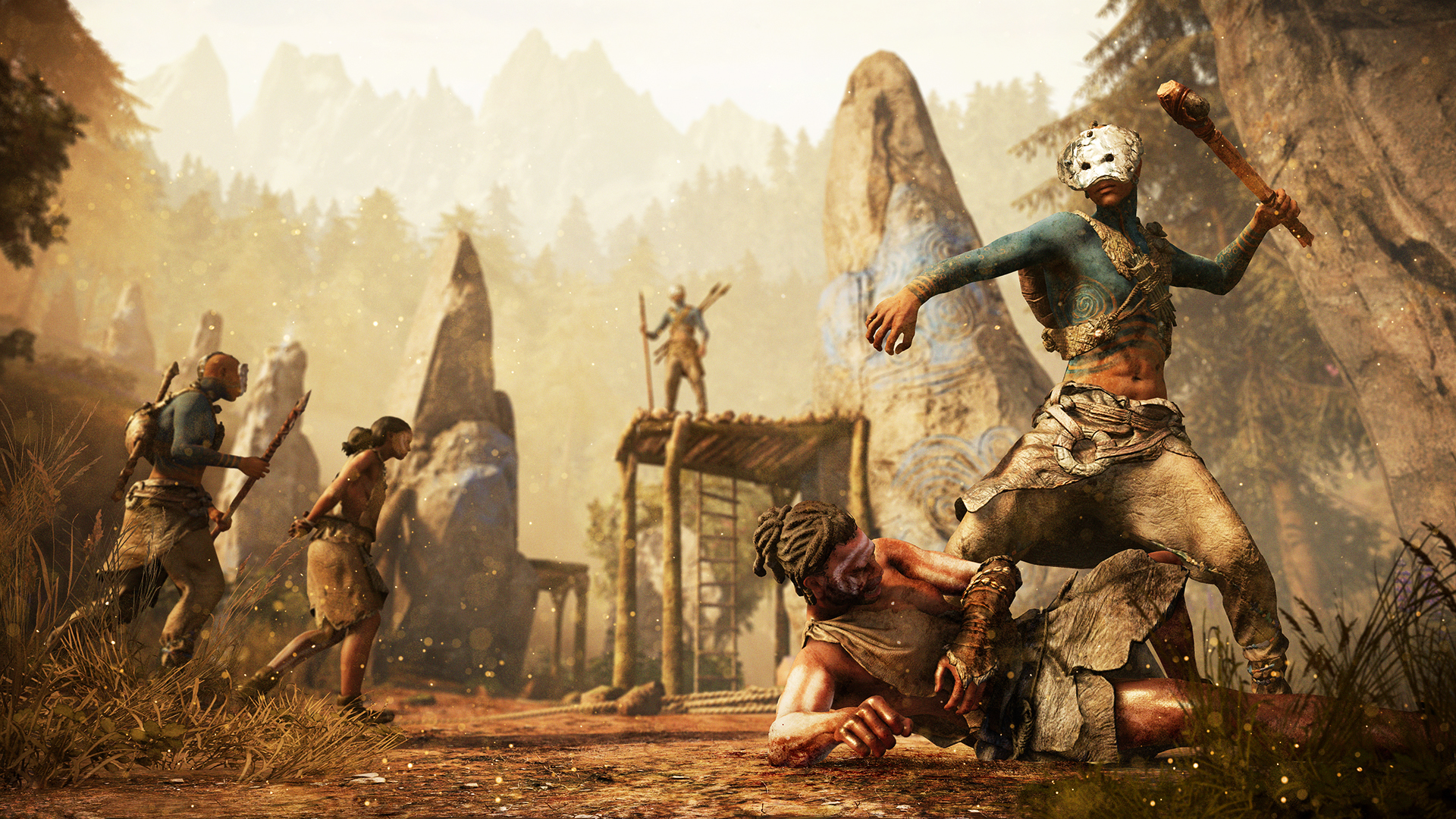
In fact, they built three versions of it. Far Cry Primal is the tale of three conflicting tribes, the spiritual Wenja, the more aggressive, primitive Udam, and the arrogant, culturally advanced Izila. Visually, each civilisation’s look reflects its values – the Wenja are all natural, earthy tones, whereas the vain but skilled Izila are draped with unnecessary but well-crafted cosmetic touches – but the customisation goes much deeper than that. It bleeds through into their very means of communication and expression, as Andrew tells me.
“The Izila and the Wenja have totally different world-views. The Wenja are nicer. They believe that everything has a spirit. The Izila are like, ‘We’re awesome’ - the name, by the way, means ‘The Masters’. They rule everything. If you’re not Izila, they’re going to enslave you and they’re going to make you build their megaliths. And the way that they put their nouns together actually reflects that world-view. The Izila, they have two classes. You’re either rational or irrational. You’re either thinking or non-thinking. The Izila, and the gods, and selected Wenja are in the thinking class, and everybody else is an ‘it’, essentially.
“But for the Wenja, it’s all about ‘Do you have a spirit?’. The bears, the plants, the Wenja, the Izila, the Udam, they all have spirits, so they’re all grammatically on the same level. Things like rocks are different.”
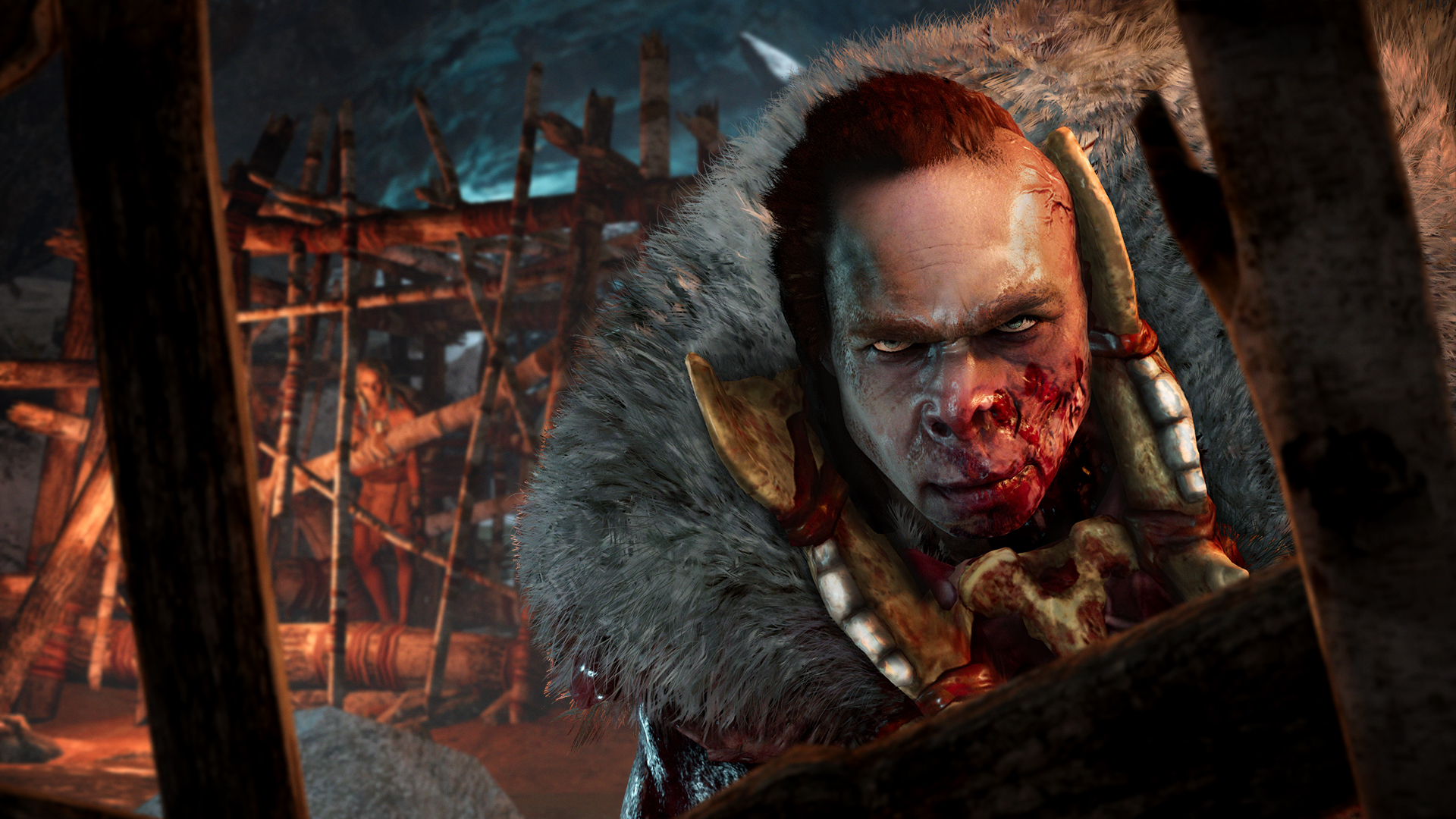
And with fully motion-captured cinematics performed by a cast entirely embedded in these linguistic cultures, the actors apparently embraced the potential wholeheartedly. Once of them learned the language so well that she spotted a typo in the script, and started questioning her character’s choice of words, Brenna reveals. Apparently it was “So cool. And embarrassing. And cool”. In fact the effects of this cultural language design can even be seen in the actors’ physicality.
“Oftentimes the actors would talk about how the language would help them with their body movement”, Andrew tells me. “One of the movement coaches would talk about how Wenja was such a grounded language. The rhythm of the language was actually designed to be like a drum-beat. But Izila is designed to be very sing-songy. In fact the way that the Izila move, they float everywhere”.
Brenna concurs: “The Izila play around with the language. They have fun with it. They can elongate. My favourite part was when one of the actors took the word ‘Yes’. We told him ‘Trill the ‘r’s as long as you want’, and he really did. You can definitely feel that, where Wenja’s ‘dum, da dum, da dum’, and Izila’s all over the place. They can elongate one vowel, and just maaaake it soooound like it just goes on and on and on. It’s just great”
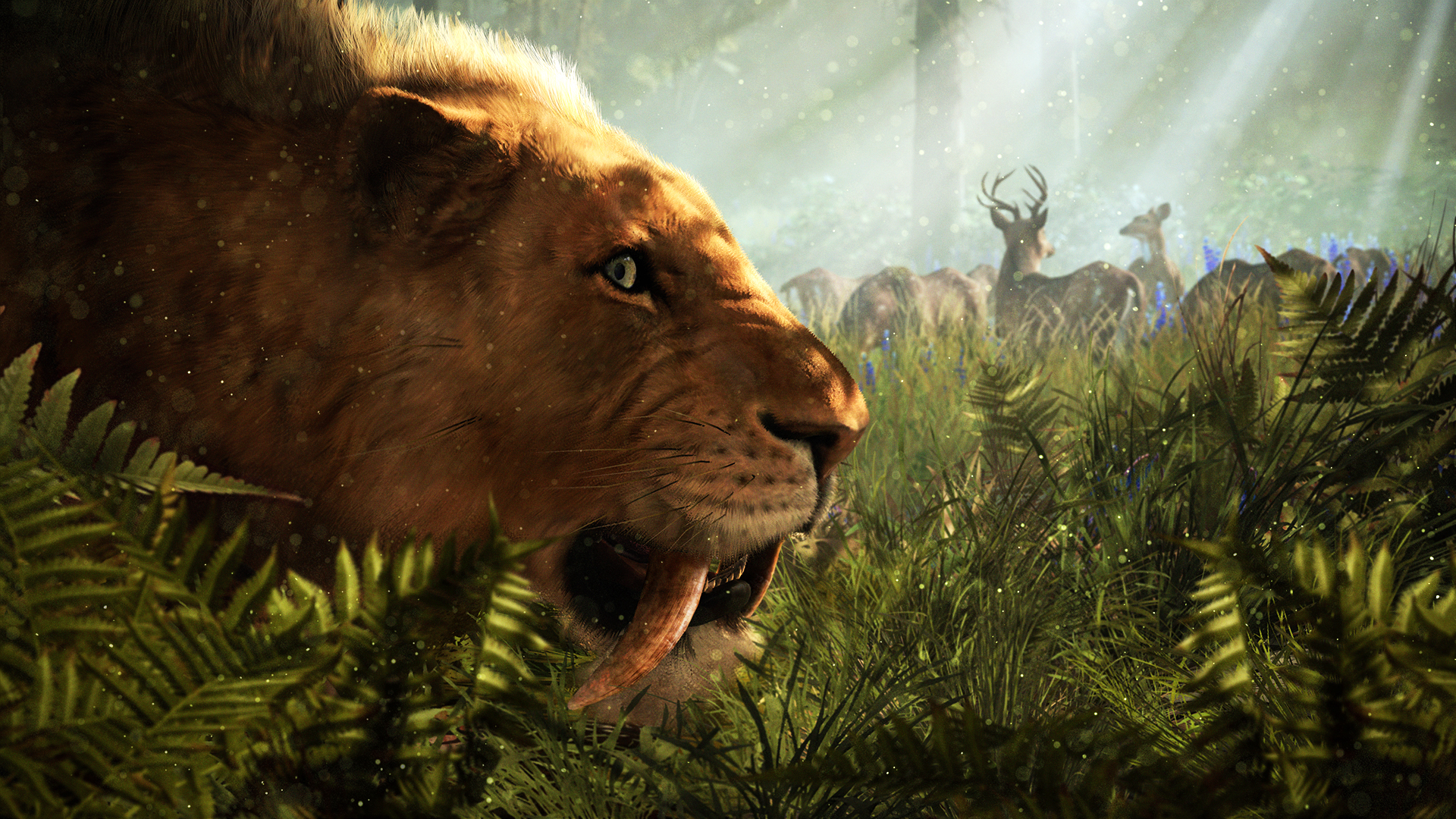
I see all of this come together when I’m shown a mocap workshop, involving actor TC ‘Kratos’ Carson, who plays a Wenja shaman in the game. Initially it looks bizarre, the players speaking in casual, modern colloquialisms while acting out a distinctly Neanderthal scene. But this is an ‘emotional run-through’, designed to tune the actors into the dramatic flow of the action before the authentic language comes in. With the created words laid over the top of a second performance, it all makes sense, literally and figuratively, to performer and viewer alike. Although the language is unintelligible to the uneducated observer, the natural beats and rhythms of the scene do half of the translation work on their own.
At the moment, this kind of ‘translation’ seems to be what Far Cry Primal is all about. It’s a game which transposes familiar systems into an alien, seemingly ill-fitting environment, but makes them work by tweaking their feel and form to suit the world around them. That world itself is a kind of translation too, designed to be as grounded and plausible as necessary to embed the player, before allowing their more extravagant actions to feel like a natural part of the same lexicon.
And so far, it feels like it works. It’s a more raw, stripped back, dangerous-feeling Far Cry, without doubt, but it’s also undeniably Far Cry. It’s of course still too early to make a final judgment call on Ubisoft’s carefully conducted experiment, but with a console release due at just the end of this month, it won’t be long before the results can speak for themselves.

